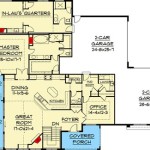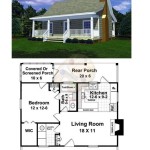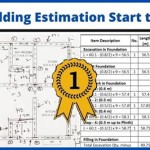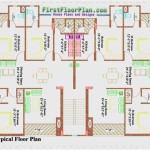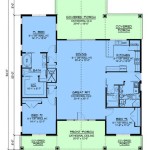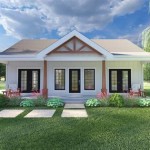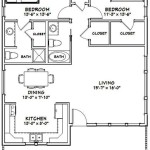How to Find Floor Plans of a Building
Locating building floor plans can be crucial for various purposes, from renovations and interior design to emergency planning and historical research. This process may require some investigative work, and the availability of plans depends on several factors, including the building's age, type, and location. This article outlines several strategies and resources that can be utilized in the search for building floor plans.
1. Contacting Building Management or Owners
The most direct approach to obtaining floor plans is to contact the building's current owners or management company. For residential buildings, this might involve reaching out to the homeowner's association, property manager, or landlord. In the case of commercial buildings, contacting the building's facilities manager or the leasing office is often the most effective starting point. These entities are likely to have the most up-to-date and accurate floor plans on file.
When making inquiries, providing specific information about the building, such as its address and unit number (if applicable), can expedite the process. It is also helpful to clearly state the purpose for which the floor plans are needed. While there's no guarantee of access, direct contact is often the most efficient first step.
2. Checking Local Government Agencies
Many local government agencies maintain records related to building permits and construction. These records often include architectural drawings and floor plans, particularly for newer buildings. The specific agencies responsible for maintaining these records can vary depending on the jurisdiction. Common departments to contact include the building department, planning department, or records office of the city, county, or town where the building is located.
Accessing these records may involve submitting a formal request, paying a small fee, and adhering to specific procedures. Some jurisdictions may have online portals where records can be searched and accessed electronically. Others may require in-person visits to review physical files. It is advisable to contact the relevant agency directly to inquire about their specific processes and requirements.
It's important to note that the availability of these records can vary. Older buildings might have limited or incomplete documentation. Additionally, some jurisdictions may restrict access to certain records due to privacy concerns or other regulations.
3. Exploring Online Resources and Databases
Several online resources and databases can be valuable tools in the search for building floor plans. Real estate websites often feature floor plans for properties currently or previously listed for sale or rent. These websites can be a good starting point, especially for residential buildings. However, the availability and accuracy of floor plans on these platforms can vary.
Historical societies and archives can be valuable resources for older buildings. These organizations often maintain collections of historical documents, including architectural drawings and blueprints. Accessing these collections may require visiting the archive in person or submitting a research request. University libraries and special collections can also hold relevant architectural archives.
Subscription-based services specializing in providing access to building plans and specifications also exist. These services can be helpful for professionals in fields like architecture, engineering, and construction, but they often come at a cost.
4. Utilizing Architectural Firms and Professionals
If the building was designed by a known architectural firm, contacting the firm directly can be a viable option. Architectural firms often retain copies of their project drawings and may be willing to share them upon request. This approach is more likely to be successful for significant or historically relevant buildings.
Hiring an architect or other building professional can also be a useful strategy. These professionals often have access to resources and databases not readily available to the public. They can also assist with interpreting architectural drawings and specifications, which can be complex and require specialized knowledge.
Engaging a professional service can be particularly beneficial for complex projects involving renovations or additions, where accurate and detailed floor plans are essential.
5. Examining Tax Assessor Records
Tax assessor offices maintain records of properties within their jurisdiction, and these records may include basic floor plans or sketches. While these plans may not be as detailed as architectural drawings, they can still provide valuable information about the building's layout and dimensions. Accessing tax assessor records usually involves contacting the assessor's office directly or searching their online database.
The level of detail available in tax assessor records can vary significantly depending on the jurisdiction and the age of the building. While some offices may have digital records readily available online, others may require in-person visits or formal requests.

9 Ways To Find Floor Plans Of An Existing House Blueprints Archid

Where You Can Buy House Plans Live Home 3d

How To Get Blueprints Of Your House

How To Find Building Plans For My House Architecture Design Plan

9 Ways To Find Floor Plans Of An Existing House Blueprints Archid

How To Read House Plans Elevations

How To Read A Floor Plan With Dimensions Houseplans Blog Com

How To Read Floor Plans

How To Read A Floor Plan With Dimensions Houseplans Blog Com

Floor Plans Learn How To Design And Plan

